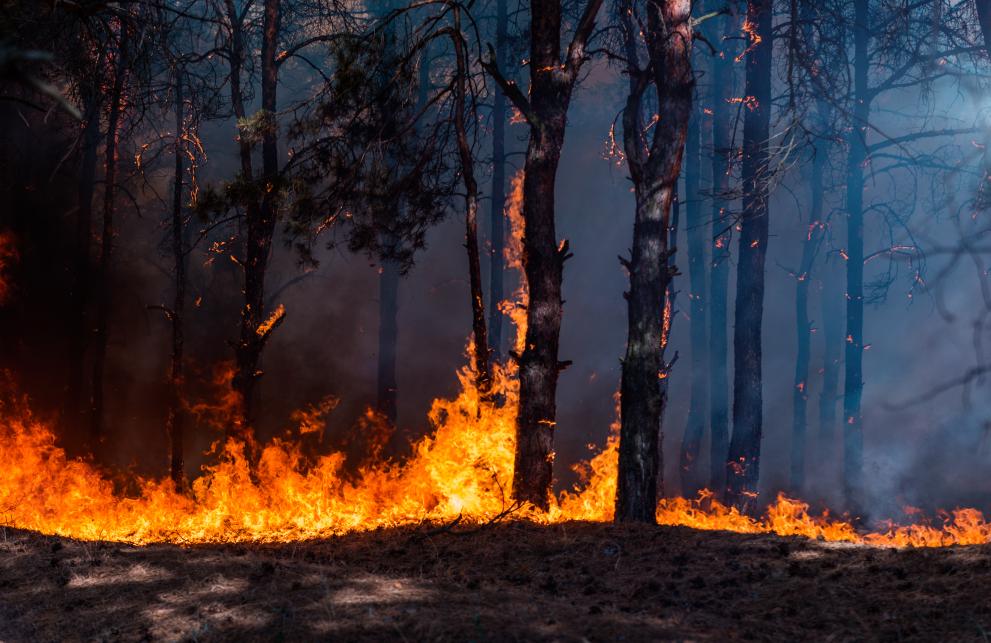
A report stemming from the collaboration between the European Commission and fire specialists from 43 countries has just been published. The report focuses on wildfire risk assessment and provides harmonised data in the Pan-European region. This is of special interest in fire-prone regions, where coherent strategies are needed to prevent wildfire damages.
As fires rage across the EU and the globe, there is a widespread consensus that firefighting, only, is not the answer when it comes to mitigating the damage caused by wildfires. To face the forthcoming wildfire danger situations under climate change, a focus on wildfire prevention with a specific attention on proper planning of the landscape is required, to avoid the profusion and continuity of fuel materials on the ground, and to protect human lives and assets in fire-prone areas. For this purpose, the assessment of wildfire risk is essential.
The first Pan-European wildfire risk assessment (WRA) conciliates previous approaches used by different countries, making a comparable assessment of wildfire risk across countries and regions in Europe possible. This harmonised method will support the EU and its Member States protect lives and their natural environment.
The challenges of assessing fires across countries
According to Jesus San-Miguel, leader of the JRC Wildfires team, “although some countries have developed methods to assess wildfire risk, these vary widely in terms of the variables and methodologies used. This is often an obstacle to having an overview of the risk situation at the Pan-European level and developing regional strategies.”
Different fire assessing methods produced for different territories and specific purposes naturally lead to various regional and national approaches. This diversity can often be an impediment in assessing wildfire risk in some regions, particularly in those where transborder fires affect several countries simultaneously.
The Pan-European assessment was developed to solve this challenge and offer an overview of wildfire risk across the Pan-European region. Using data trends from the past 20 years, it provides an overview on the — low, intermediate or high — structural wildfire risk in the present.
A harmonised approach to fire risk assessment in Europe
The WRA is the result of 8 years of collaboration between the European Commission and the Expert Group on Forest Fires composed of fire specialists from 43 countries.
It provides the ground for nations to adopt standard practices and cooperation measures, benefitting from the newly developed risk assessment indicators, which could complement their national plans.
Wildfire risk is assessed by considering the vulnerable areas where people, ecological, and socioeconomic values are exposed to fire danger. The risk for human lives is prioritised by ranking areas where people may be exposed to wildfires as high-risk.
The multiple benefits of a wildfire risk assessment
The WRA will support EU initiatives such as the Civil Protection Mechanism, the EU Solidarity Fund, or the implementation of the Rural Development Regulation to determine which areas may be at medium and high risk of fires, among others.
At a national level, it can support governments and disaster management authorities to incorporate risk assessment indicators in prevention, mitigation and preparedness plans – which is particularly important for fire-prone countries.
Ultimately, other public or private stakeholders involved in fire risk management such as insurance companies can also benefit from the data generated by WRA. The European Commission remains open to collaboration to disseminate the use of the index.
Background
EFFIS (the European Forest Fire Information System) supports the services in charge of the protection of forests against fires in the EU and neighbour countries. At a global level, the Global Wildfire Information System (GWIS) provides a comprehensive view and evaluation of fire regimes and effects.
Details
- Publication date
- 5 August 2022
- Author
- Joint Research Centre
- JRC portfolios




